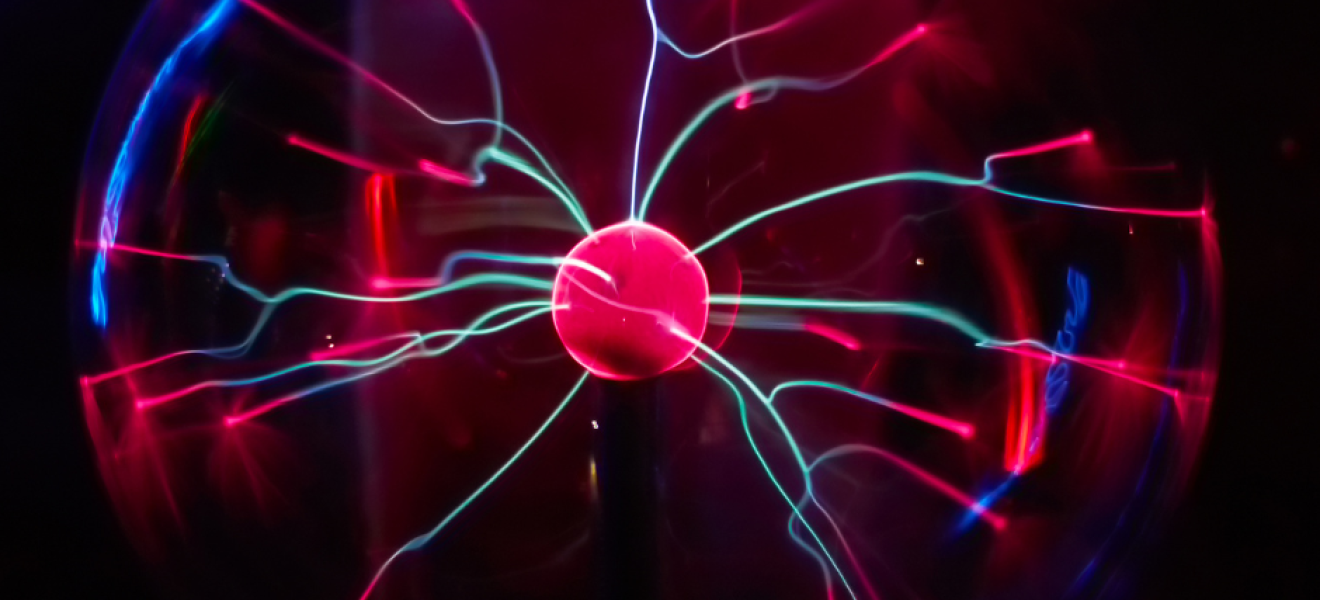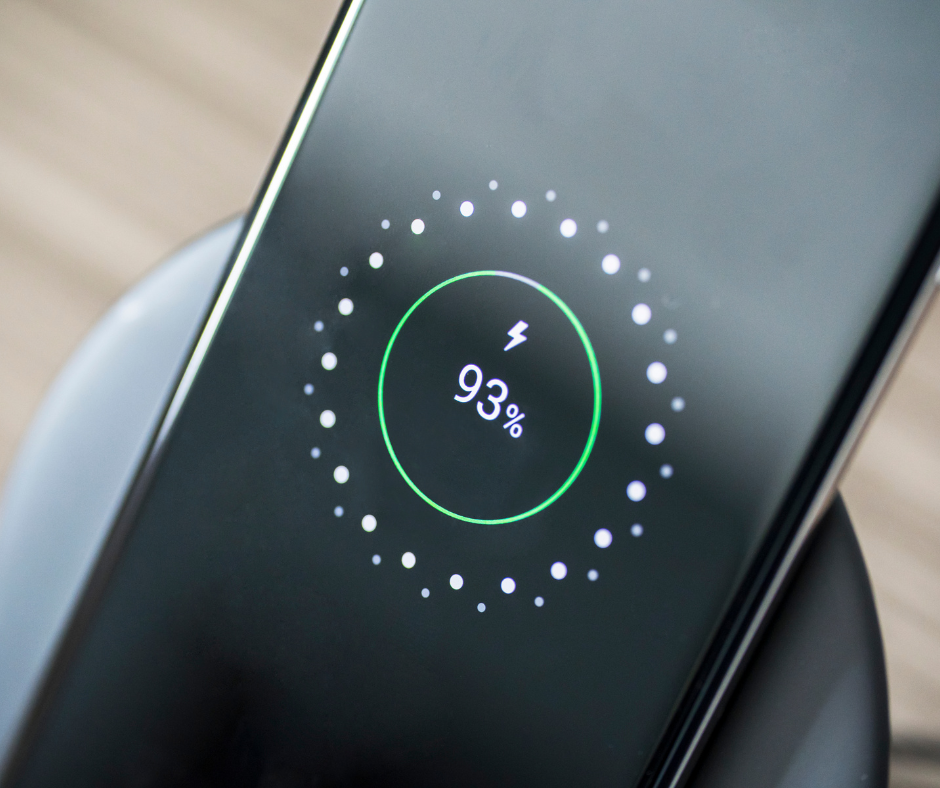AC/DC: All Charged Up

Wentworth undergraduates participate in research at every stage and level
"Engineering is a lot of fun for me," Associate Professor of Mechanical Engineering John Voccio says before taking a sip from his large cup of Dunkin' cold brew. "I like to ask questions and then try to design experiments to solve those questions just like the old-school scientists."
With a career spanning 35 years, primarily focusing on superconductivity and electromagnetics, Voccio's most recent research benefits from the work of some of the greatest scientists and inventors that came before him–including Michael Faraday and Benjamin Franklin. "I'm sure they were having fun, too," he says.
Sitting beside Voccio is his research partner and co-author, Andrew Seredinski, assistant professor of Physics. Seredinski is an experimental physicist who teaches the Intro to Physics sequence at Wentworth as well as more advanced courses.
Recruited by Wentworth straight out of graduate school, Seredinski began teaching in Fall 2020–initially almost entirely online due to the COVID-19 pandemic. "I wasn't exactly sitting on my hands–but I definitely had the time to get some experiments going," he remembers.
Voccio offered Seredinski an entry point to make a difference in the academic community with an invitation to partner on a timely superconducting research project, and their collaboration has continued ever since.
Their latest work initially started out examining the electrostatic charges residing on smartphone capacitive touchscreen surfaces and how those charges rise or fall depending on a surrounding environment's relative humidity. In short, they wanted to know if the ubiquitous screens could possibly attract airborne particles, including dust, aerosols, and even viruses like COVID-19–and if the answer varies depending on the humidity levels of the phone's location. They also wanted to understand if certain phone cases or screen protectors impact charge levels.
Initial findings of the DC electrostatic experiments were published in 2023 in the ASME Open Journal of Engineering, along with a second paper on AC electric fields in AIP Advances, and most recently published a third paper ian the Journal of Electrostatics looking at methods of minimizing potential interactions between these electric fields and aerosols in low relative humidity environments. This new paper gives practical guidelines for raising indoor relative humidity (RH > 50%, if possible) along with practical risk mitigation suggestions for mobile phone hygiene, including regular cleaning, charging considerations, and curbing use in public restrooms.

A Collaborative Team Environment
Although this research is essential, what is of equal value is how this multidisciplinary team of Wentworth faculty and students pulled together to collaborate.
Collaborating with one another and with students becomes an essential strategy for accomplishing research—and the university offers funding to make it possible.
Seredinski observes, "One strength here at Wentworth is that there are research opportunities for undergraduates. They are involved at every level of an experiment working with the team from the beginning stages through writing a paper presenting our initial findings."
In his research, Voccio has often measured magnetic fields but didn't readily know how to measure an electric field, so he first visited the electrical engineering department to ask Jiahui Song, professor of Electrical and Computer Engineering, who has expertise in computational bio-electrics and molecular dynamics.
What Voccio forgot to mention to her was that he wanted DC electrostatic fields, so Song used an AC electric field meter and sent the data to Voccio. Surprised to find AC electric fields, Voccio made a homemade Faraday inductive pick-up coil to further investigate these fields, which occur during charging, and then Seredinski worked with students to measure the frequency of these fields. This led to their initial publication on AC electric fields in AIP Advances.
As for the DC electrostatic field experiment, a student, Andrew Lanzrath ME '22, ultimately guided the team to a breakthrough by suggesting an experiment that could measure the variations of electrostatic charges on different phone models. Turning to Voccio one day, Lanzrath (now a graduate student in plasma fusion across the river at MIT) said, "Professor, why don't you use a Faraday pail?"
Performed in 1843 by Michael Faraday, a British scientist, using a brass ball fastened to a silk thread and suspended into a pewter ice pail, Faraday's ice pail experiment proved "the effect of electrostatic induction on a conducting container." A less sophisticated experiment was first conducted in 1746 by inventor and founding father Benjamin Franklin.
Voccio also consulted Mansour Zenouzi, a professor of Mechanical Engineering with expertise in thermodynamics and energy systems to better understand relative humidity. "He helped me to understand that air is like a sponge, and at any given temperature, it can only hold so much water before it starts to fall out as precipitation or rain," Voccio says.
Voccio couldn't be happier with how the team's work has progressed with everyone's input and support. He says, "Professors tell students to be life-long learners, so I try to be one myself. By collaborating, we make up for each other's blind spots."
1:1 Faculty-Student Mentoring–In the Classroom and the Lab
Following Lanzrath's recommendation, Seredinski and Voccio ordered a Faraday pail and an electrometer–a tool that reads an object's charge. They were ready to get started–but needed support in the lab. Luckily, Valeria Vivas Merino ME '23, one of Voccio's students from his Introduction to Material Science course, was looking for a hands-on opportunity to fulfill her Co-op requirement. The full-time, semester-long job allows students to apply everything they've learned in the classroom to the real world.
The main reason that Vivas Merino had transferred to Wentworth her sophomore year was to get 1:1 opportunities like this one with the Mechanical Engineering faculty.
"As a small school, I saw that Wentworth professors focused on every student and built relationships. The co-op program and the chance to get work experience as an undergraduate was the school's other main selling point for me," she says.
It was her first time working as a full-time employee or in a lab. As Vivas Merino was running the Faraday pail experiment, she was also experimenting with whether a future career in research was right for her.
In the lab, she taped various materials to different smartphone models, adjusted the humidity level, dropped the phones in the pail, and recorded the electrometer readings. Each day, Vivas Merino repeated the test many times over several months. These preliminary experiments showed that electrostatic surface charge accumulates more easily at indoor relative humidity levels below 40% and that some materials are better than others at mitigating these charges.
When she began job-hunting last Fall, Vivas Merino saw her co-op experience stand out to potential employers. She ultimately accepted a position as a mechanical designer at Stantec, a global design and delivery firm with an office in Boston.
She explains, "Having the professional experience of conducting research helped me significantly in my job-hunting process and interviews—but more than that, it made me feel like an engineer."
Read more about this work in "Experimental study of aerosol behavior in ambient electric and magnetic fields at low indoor relative humidity," which is published in Vol. 130 of Journal of Electrostatics.
